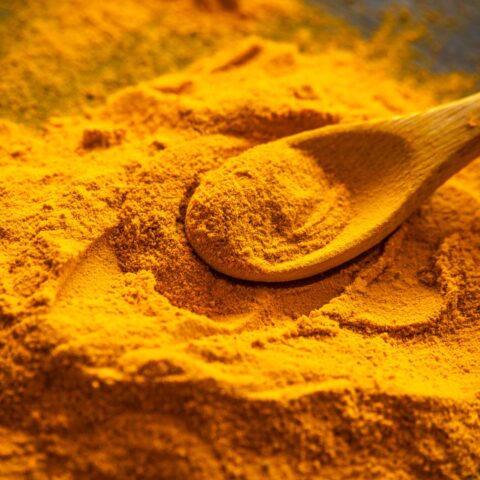The Sodium/Potassium Ratio and Its Importance in Human Health

When Dr. Loren Cordain first introduced the concept of Paleolithic nutrition, the scientific research illustrated the importance of three critical nutrient ratios: omega-6 to omega-3 fatty acids, calcium to magnesium, and sodium to potassium (Na+/K+). The evidence suggested these three ratios were quite different in a Paleolithic diet when compared to a typical Western diet. Furthermore, the ratios found in a Paleolithic diet were far more beneficial to human health.
We have written extensively at The Paleo Diet® regarding our concern that the greater Paleo community has, with little scientific support, embraced the notion that it is acceptable to consume sodium quantities above governmental guidelines (for example, through the copious addition of sea salt to many “Paleo Certified” food items).
Paleolithic nutrition often does not align with government guidelines. However, in this instance, there is an agreement between The Paleo Diet’s scientific position—natural foods in primitive and current times provide low sodium quantities—and government recommendations for sodium intake.
Why the sodium/potassium ratio is so important
Providing our physiology with foods that match our genetically determined nutritional requirements is one of the main tenets of a Paleolithic diet. Dietary mismatches can result in health concerns.
The Western diet is low in plant foods containing potassium alkali salts (K-base), which our ancestors ate in abundance. Simultaneously, modern diets comprise foods that replace those K-base salts with sodium chloride (NaCl). As a result, in a typical Western diet, the ratio of sodium to potassium is often 1-to-1, and many times worse.
As mentioned, the ratio of sodium to potassium is crucial for our health. An increase in dietary sodium increases the sodium/potassium ratio even if recommended levels of potassium are consumed. More often, there is insufficient potassium consumption, which compounds the issue by driving the ratio further from our natural ratio of about 1-to-5 to 1-to-10.
Every cell in our body relies on an intricate balance of sodium and potassium. In 1957, scientists discovered what is called the Na+-K+ pump, found in the outer plasma membrane of almost every cell. It is responsible for pumping three sodium ions out of the cell and two potassium ions into the cell. ATP (the energy currency of the human body) is required to perform this exchange. These pumps maintain a higher concentration of sodium extracellularly (outside the cell) and a higher concentration of potassium intracellularly (inside the cell), which is crucial for the physiological processes of all cells in our body. We would die if this high concentration gradient, with sodium outside of the cells and potassium inside of the cells, was not maintained.
An understanding of the importance that sodium and potassium play in cellular function makes clear that a shift away from our genetically determined nutritional requirements can have dire consequences for our health.
Health consequences of a poor sodium/potassium ratio
A diet that is low in potassium and high in sodium increases the net systemic acid load on the body. This then leads to a chronic metabolic acidosis, which has negative effects on the body, including growth retardation in children, decreased muscle and bone mass in adults, and kidney stone formation. Correction of this acidosis can reverse these conditions (1).
Many proponents of decreased animal protein consumption argue that such a diet creates metabolic acidosis. However, previous findings that showed a correlation between hip fracture incidence and animal protein intake in older women were negated by the consumption of plant food (1). Many plant foods are high in potassium.
This finding is supported by a more recent study demonstrating that while the dietary acid load is associated with chronic kidney disease (CKD), potassium intake was negatively associated with CKD, and protein intake had no association with CKD (2).
A review of the scientific literature is overwhelmingly supportive of decreasing sodium while simultaneously increasing potassium for improved health benefits. Despite the dietary guidelines of the same recommendation, it was determined that less than 0.015 percent of the population met the goals (3). More recent findings demonstrate an improvement from this number, but still, show that only about 10 percent of American adults have a Na+/K+ ratio consistent with the WHO guidelines for reduced risk of mortality (4).
A significant body of research supports the association of a high Na+/K+ ratio with an increase in hypertension (5, 6, 7, 8). Furthermore, it has been found that low sodium and high potassium intake reduces blood pressure in hypotensive, normotensive, and hypertensive individuals (9).
A high Na+/K+ ratio has also been related to urinary stone disease (10)—a risk factor for and a predictor of CKD (11, 12). Likewise, an elevated ratio is associated with an increase in obesity (13) and is related to high insulin resistance and low insulin sensitivity (14). It has also been identified as a risk factor for stroke (15, 16, 17), and even all-cause mortality (17, 18).
What this research demonstrates is that the Na+/K+ ratio is an important factor in your health, and strategies for decreasing sodium consumption and increasing potassium consumption are prudent. One way of improving this is through reduced consumption of modern condiments and ultra-processed foods (19). Thankfully you can avoid them with little effort and easily decrease the ratio by following the guidelines and recipes here at The Paleo Diet® website. And don’t worry about including fresh meat in your diet. A very recent study from Ireland showed fresh meats, but not cured and processed meats, are associated with a lower Na+/K+ ratio (20).
Read More in Our Sodium and Potassium Series:
Why The Paleo Diet Supports a Low-Sodium Diet
By Trevor Connor, M.S.
Added Dietary Salt Adversely Influences Immunity & Inflammation
By Loren Cordain, Ph.D.
Does a Low-Salt Diet Cause Insulin Resistance?
By Trevor Connor, M.S.
References
- FrassettoL, Morris RC Jr, Sellmeyer DE, Todd K, Sebastian A. Diet, evolution and aging–the pathophysiologic effects of the post-agricultural inversion of the potassium-to-sodium and base-to-chloride ratios in the human diet. Eur J Nutr. 2001 Oct; 40(5): 200-13. Review.
https://www.ncbi.nlm.nih.gov/pubmed/11842945 - Ko BJ, Chang Y, Ryu S, Kim EM, Lee MY, Hyun YY, Lee KB. Dietary acid load and chronic kidney disease in elderly adults: Protein and potassium intake. PLoS One. 2017 Sep 27; 12(9).
https://www.ncbi.nlm.nih.gov/pubmed/28953915 - Drewnowski A, Maillot M, Rehm C. Reducing the sodium-potassium ratio in the US diet: a challenge for public health. Am J Clin Nutr. 2012 Aug; 96(2):439-44.
https://www.ncbi.nlm.nih.gov/pubmed/22760562 - Bailey RL, Parker EA, Rhodes DG, Goldman JD, Clemens JC, Moshfegh AJ, Thuppal SV, Weaver CM. Estimating Sodium and Potassium Intakes and Their Ratio in the American Diet: Data from the 2011-2012 NHANES. J Nutr. 2015 Apr 1; 146(4): 745-750.
https://www.ncbi.nlm.nih.gov/pubmed/26962185 - Yin L, Deng G, Mente A, Sun Y, Liu X, Zhang X, Wang X, Wang Y, Bo J, Chen H, Liu X, Gao N, Bai X, Rangarajan S, Li W. Association patterns of urinary sodium, potassium, and their ratio with blood pressure across various levels of salt-diet regions in China. Sci Rep. 2018 Apr 30;8(1): 6727.
https://www.ncbi.nlm.nih.gov/pubmed/29712960 - Cunha MR, Cunha AR, Marques BCAA, Mattos SS,D’El-Rei J, França NM, Oigman W, Neves MF. Association of urinary sodium/potassium ratio with structural and functional vascular changes in non‐diabetic hypertensive patients. J Clin Hypertens (Greenwich). 2019 Sep; 21(9): 1360-1369.
https://www.ncbi.nlm.nih.gov/pubmed/31444860 - Sebastian A,CordainL, Frassetto L, Banerjee T, Morris RC. Postulating the Major Environmental Condition Resulting in the Expression of Essential Hypertension and Its Associated Cardiovascular Diseases: Dietary Imprudence in Daily Selection of Foods in Respect of Their Potassium and Sodium Content Resulting in Oxidative Stress-Induced Dysfunction of the Vascular Endothelium, Vascular Smooth Muscle, and Perivascular Tissues. Med Hypotheses. 2018 Oct; 119: 110-119.
https://www.ncbi.nlm.nih.gov/pubmed/30122481 - Zhao X, Zhang Y, Zhang X, Kang Y, Tian X, Wang X, Peng J, Zhu Z, Han Y.Associations of urinary sodium and sodium to potassium ratio with hypertension prevalence and the risk of cardiovascular events in patients with prehypertension.J Clin Hypertens (Greenwich). 2017 Dec; 19(12): 1231-1239.
https://www.ncbi.nlm.nih.gov/pubmed/29087023 - Li Y, Yin L, Peng Y, Liu X, Cao X, Wang Y, Yang P, Li X, Chen Z.The association of blood pressure with estimated urinary sodium, potassium excretion and their ratio in hypertensive, normotensive, and hypotensive Chinese adults. Asia Pac J Clin Nutr. 2020; 29(1): 101-109.
https://www.ncbi.nlm.nih.gov/pubmed/32229448 - Cirillo M,Laurenzi M, Panarelli W, Stamler J. Urinary sodium to potassium ratio and urinary stone disease. Kidney Int. 1994 Oct; 46(4): 1133-9.
https://www.ncbi.nlm.nih.gov/pubmed/7861708 - Koo H, Hwang S, Kim TH, Kang SW, Oh KH,AhnC, Kim YH. The ratio of urinary sodium and potassium and chronic kidney disease progression. Medicine (Baltimore). 2018 Nov; 97(44).
https://www.ncbi.nlm.nih.gov/pubmed/30383635 - Mirmiran P,NazeriP, Bahadoran Z, Khalili-Moghadam S, Azizi F. Dietary Sodium to Potassium Ratio and the Incidence of Chronic Kidney Disease in Adults: A Longitudinal Follow-Up Study. Prev Nutr Food Sci. 2018 Jun; 23(2): 87-93.
https://www.ncbi.nlm.nih.gov/pubmed/30018885 - Jain N,Minhajuddin AT, Neeland IJ, Elsayed EF, Vega GL, Hedayati SS. Association of urinary sodium-to-potassium ratio with obesity in a multiethnic cohort. Am J Clin Nutr. 2014 May; 99(5): 992-8.
https://www.ncbi.nlm.nih.gov/pubmed/24552753 - Park YM,KwockCK, Park S, Eicher-Miller HA, Yang YJ. An association of urinary sodium-potassium ratio with insulin resistance among Korean adults. Nutr Res Pract. 2018 Oct; 12(5): 443-448.
https://www.ncbi.nlm.nih.gov/pubmed/30323912 - Averill MM, Young RL, Wood AC,KurlakEO, Kramer H, Steffen L, McClelland RL, Delaney JA, Drewnowski A. Spot urine sodium-to-potassium ratio is a predictor of stroke: The Multi-Ethnic Study of Atherosclerosis (MESA). Stroke. 2019 Feb; 50(2): 321-327.
https://www.ncbi.nlm.nih.gov/pubmed/30661503 - Willey J, Gardener H, Cespedes S, Cheung YK, Sacco RL, Elkind MSV.Dietary sodium to potassium ratio and risk of stroke in a multi-ethnic urban population: The Northern Manhattan Study.Stroke. 2017 Nov; 48(11): 2979-2983.
https://www.ncbi.nlm.nih.gov/pubmed/29018136 - Okayama A, Okuda N, Miura K, Okamura T, Hayakawa T, Akasaka H, Ohnishi H,SaitohS, Arai Y, Kiyohara Y, Takashima N, Yoshita K, Fujiyoshi A, Zaid M, Ohkubo T, Ueshima H; NIPPON DATA80 Research Group. Dietary sodium-to-potassium ratio as a risk factor for stroke, cardiovascular disease and all-cause mortality in Japan: the NIPPON DATA80 cohort study. BMJ Open. 2016 Jul 13; 6(7).
https://www.ncbi.nlm.nih.gov/pubmed/27412107 - Judd SE, Aaron KJ, Letter AJ, Muntner P, Jenny NS, Campbell RC, Kabagambe EK, Levitan EB, Levine DA, Shikany JM, Safford M, Lackland DT. High sodium:potassium intake ratio increases the risk for all-cause mortality: the REasons for Geographic And Racial Differences in Stroke (REGARDS) study. J Nutr Sci. 2013 Apr 23; 2.
https://www.ncbi.nlm.nih.gov/pubmed/25191561 - Oliveira LS, Coelho JS, Siqueira JH, Santana NMT, Pereira TSS, Molina MDCB.Sodium/potassium urinary ratio and consumption of processed condiments andultraprocessed foods. Nutr Hosp. 2019 Mar 7; 36(1): 125-132.
https://www.ncbi.nlm.nih.gov/pubmed/30834771 - Morrissey E, Giltinan M, Kehoe L, Nugent AP, McNulty BA, Flynn A, Walton J. Sodium and Potassium Intakes and Their Ratio in Adults (18–90 y): Findings from the Irish National Adult Nutrition Survey. Nutrients. 2020 Mar 28; 12(4).
https://www.ncbi.nlm.nih.gov/pubmed/32231006
Mark J. Smith, Ph.D.
One of the original members of the Paleo movement, Mark J. Smith, Ph.D., has spent nearly 30 years advocating for the benefits of Paleo nutrition.
More About The Author



